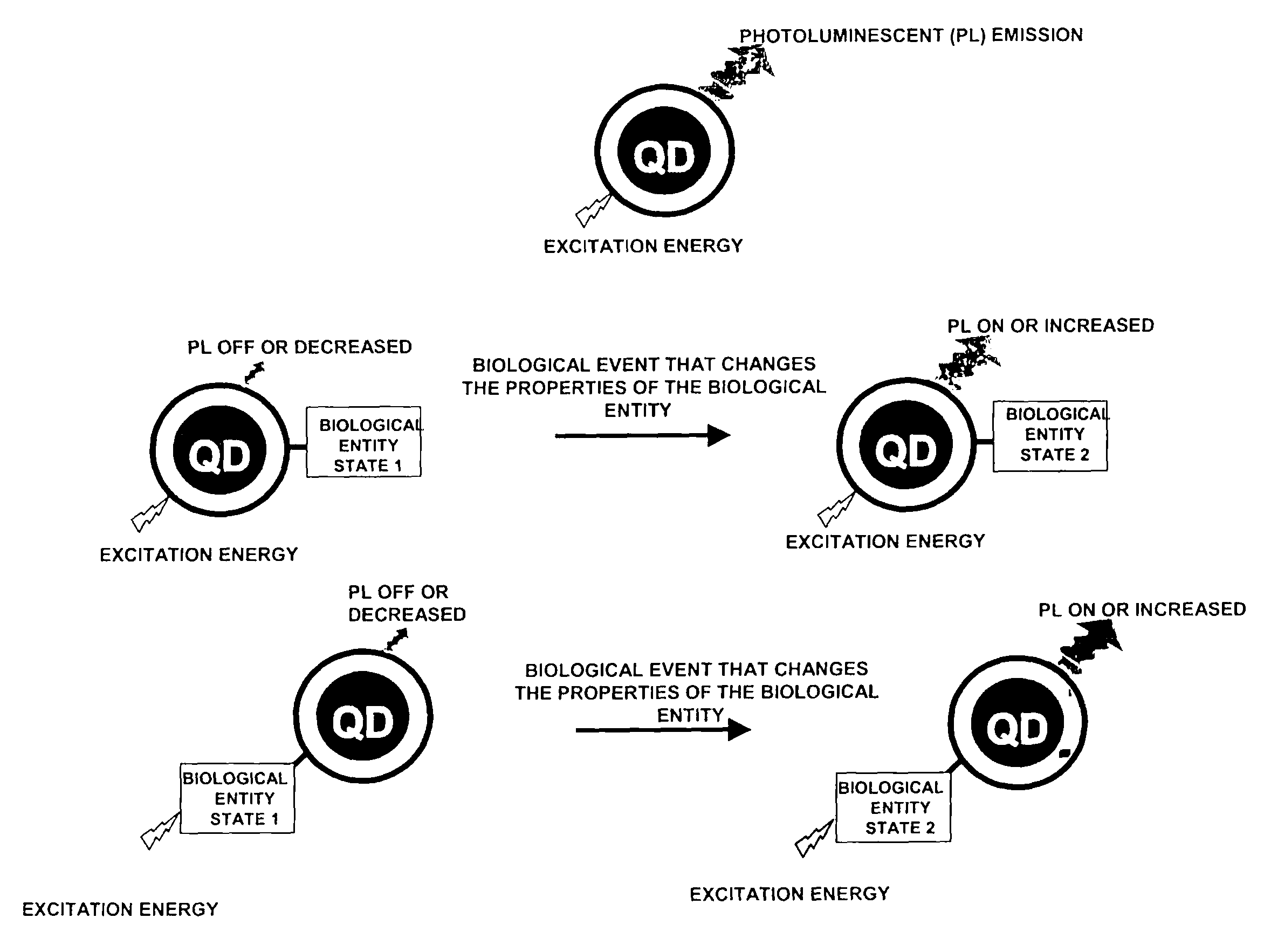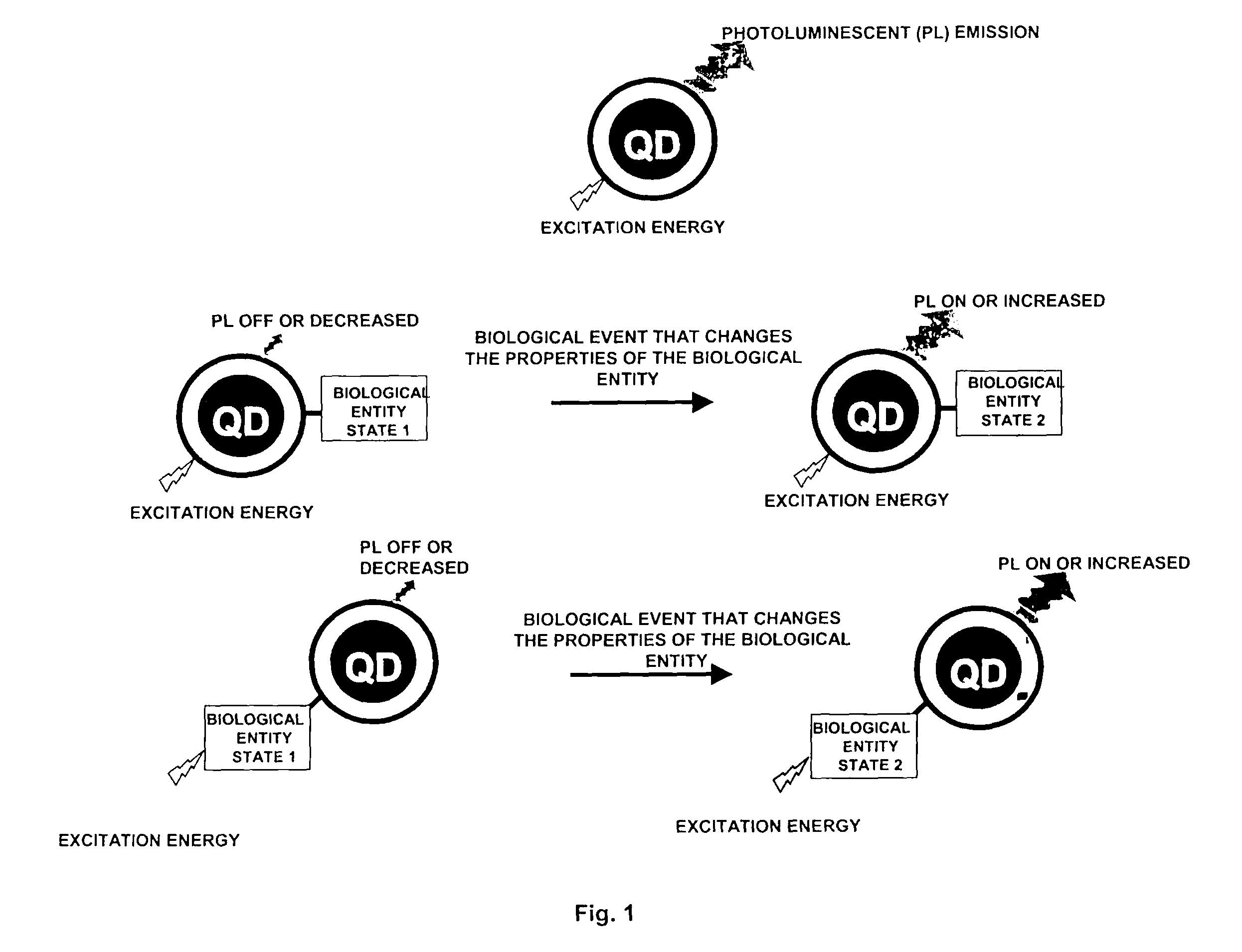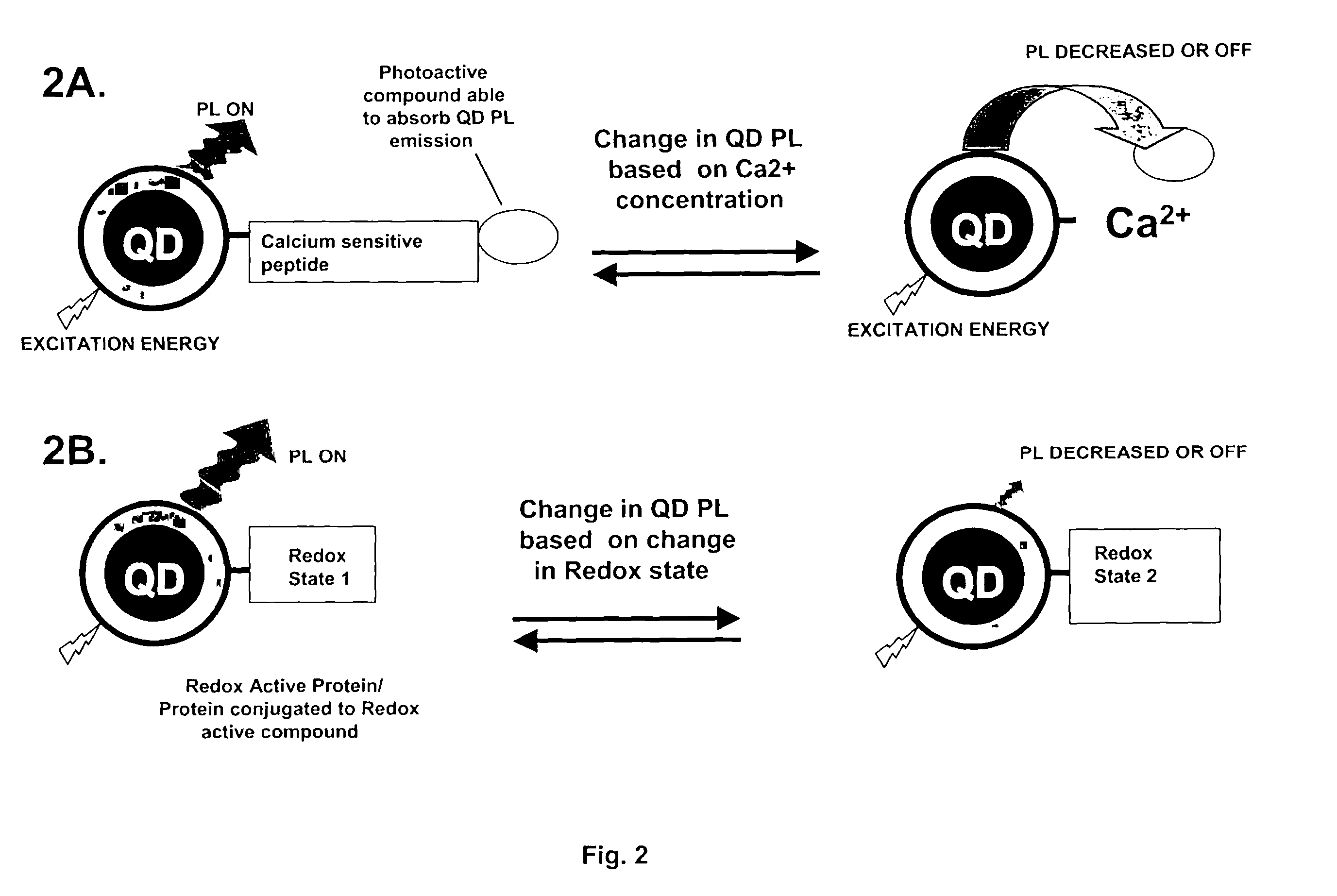Method of controlling quantum dot photoluminescence and other intrinsic properties through biological specificity
a quantum dot and photoluminescence technology, applied in the field of biological specificity, can solve the problem of not being able to achieve specific and controllable manners
- Summary
- Abstract
- Description
- Claims
- Application Information
AI Technical Summary
Benefits of technology
Problems solved by technology
Method used
Image
Examples
Embodiment Construction
[0020]A method of controlling the spectroscopic properties of luminescent QDs (e.g. nanocrystals of CdSe) induced by charge transfer to the nanocrystal (ionization) through, for example, redox interactions with proximal redox active groups are provided. The latter can be brought in close proximity to the QD via solution phase diffusion, or in a more controllable method using conjugation to a protein / peptide that can be either externally labeled with a redox active group or engineered to express a redox center within its structure. Close proximity is defined as the distance that the biological entity is in relation to the QD. The biological entity must be close enough to exert an influence on the QD. Those skilled in the art would understand that the relative proximity is determined by the QD, the nature of the biological entity, and the type of mechanism the biological entity uses to control the QD. For example, charge-transfer has an exponential dependence on distance and so the bi...
PUM
| Property | Measurement | Unit |
|---|---|---|
| separation distance | aaaaa | aaaaa |
| concentration | aaaaa | aaaaa |
| photoluminescence | aaaaa | aaaaa |
Abstract
Description
Claims
Application Information
 Login to View More
Login to View More - R&D
- Intellectual Property
- Life Sciences
- Materials
- Tech Scout
- Unparalleled Data Quality
- Higher Quality Content
- 60% Fewer Hallucinations
Browse by: Latest US Patents, China's latest patents, Technical Efficacy Thesaurus, Application Domain, Technology Topic, Popular Technical Reports.
© 2025 PatSnap. All rights reserved.Legal|Privacy policy|Modern Slavery Act Transparency Statement|Sitemap|About US| Contact US: help@patsnap.com



